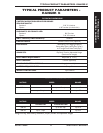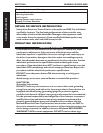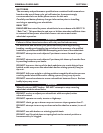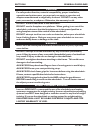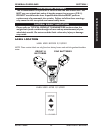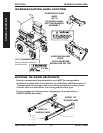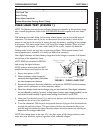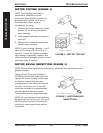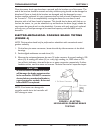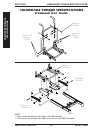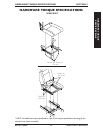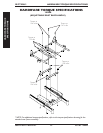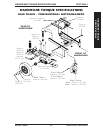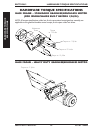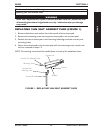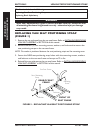
Part No. 1104849 19 3G Storm Series
®
Wheelchairs
Once the motor brush caps have been removed, pull the brushes out of the motor. The
end of the brushes should be smooth and shiny and the spring should not be damaged or
discolored. If one or both of the brushes are damaged, only the damaged or worn
brushes need be replaced. It is very important that any time a brush is replaced, it must
be “burned in”. This is accomplished by running the motor for one hour in each
direction with a half hour break in-between. This should also be done with little or no
load on the motor, i.e., put the wheelchair up on blocks so the drive (large) wheels do
not contact the ground and run the wheelchair. A motor with only one brush replaced
will only carry a small percentage of its rated load capacity until the NEW brush is
burned in.
ELECTRO-MECHANICAL PARKING BRAKE TESTING
(FIGURE 4)
NOTE: This procedure should only be performed on wheelchairs with conventional motor/
gearbox assembly.
1. On the four-pin motor connector, locate the side by side connectors in the black
housings.
2. Set the digital multimeter to read ohms (Ω).
3. Measure the resistance between the two (2) brake contacts. A normal reading is 100
ohms (Ω). A reading of 0 ohms (Ω) or a very high reading; i.e., MEG ohms or O.L.
(out of limit) indicates a shorted brake or an open connection respectively. If either
condition exists, send the motor to Invacare Technical Service for inspection/repair.
CAUTION
A shorted electro-mechanical brake
will damage the brake output section
in the controller. DO NOT connect a
shorted electro-mechanical brake to
a good controller module. A shorted
brake MUST be replaced.
NOTE: A bad motor can damage the
controller module but a bad controller will
NOT damage a motor.
4 Pin Motor Connector
Ohmmeter
FIGURE 4 - ELECTRO-
MECHANICAL PARKING BRAKE
TESTING
SECTION 2TROUBLESHOOTING
TROUBLESHOOTING



